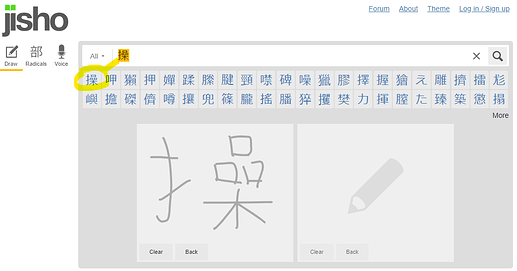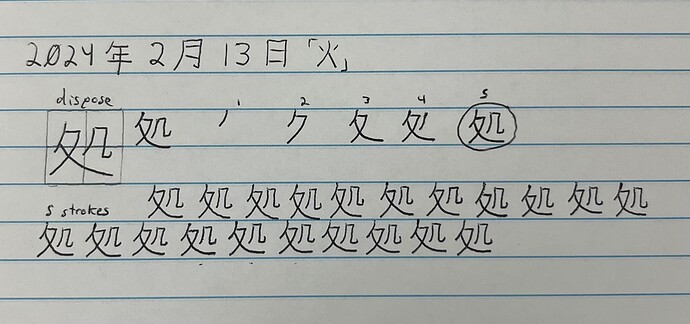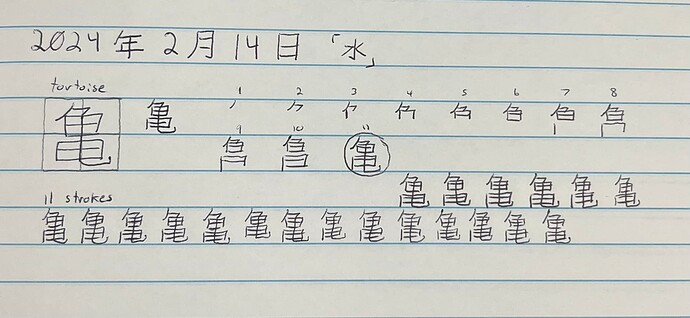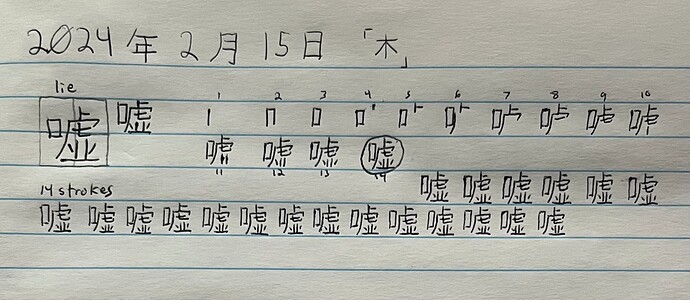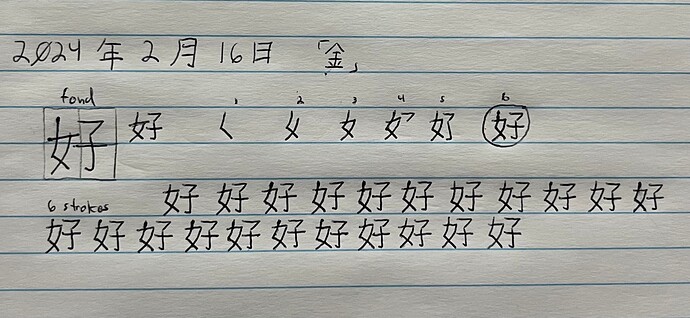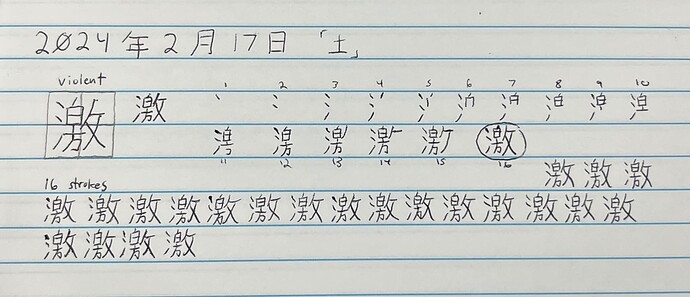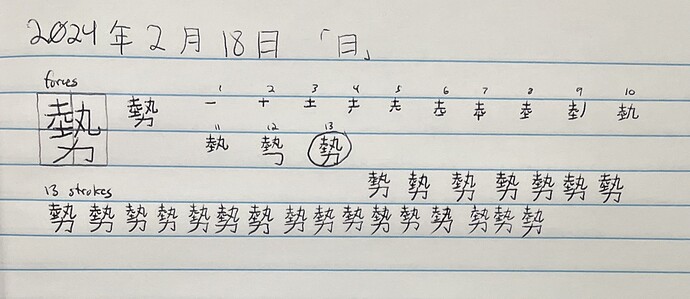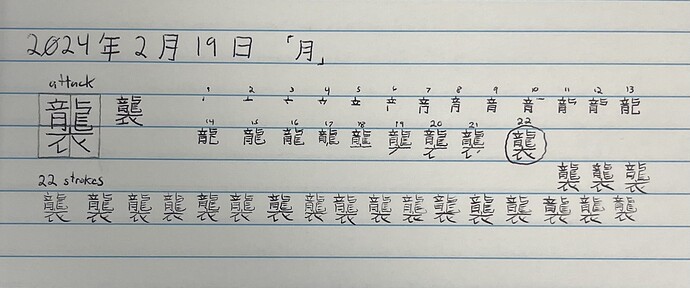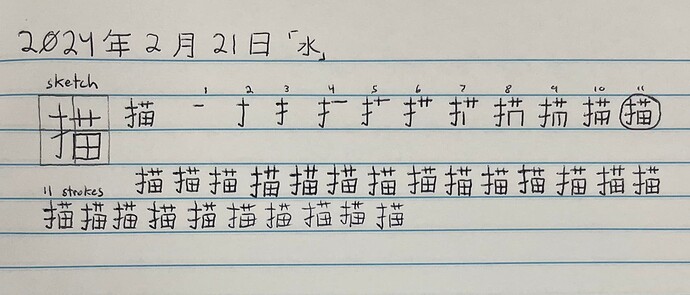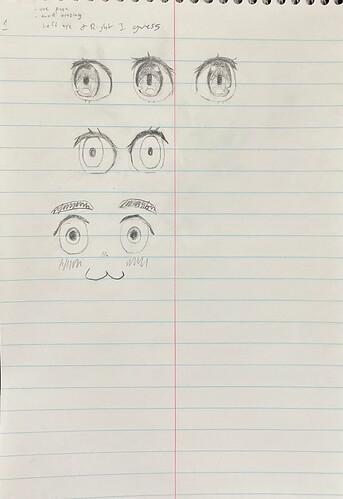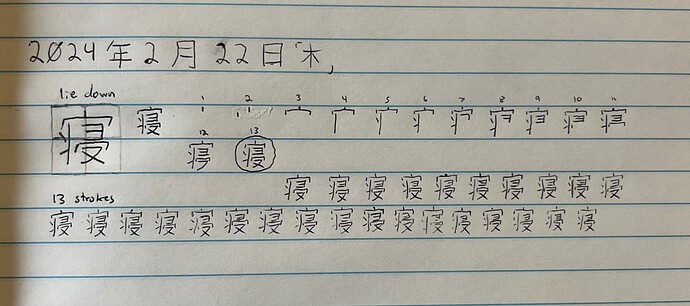Yeah, I think so too. My practice writing it out a dozen times after that went a little better, though still not quite right, even with trying to be conscious of everything’s placement. I guess this is just one I’ll have to practice more if I want it to look right rather than merely “close enough.”
And in general the hand and other radicals that flick up like that at the bottom. If I write any faster than pretty slowly, they have a tendency to wind up more straight like that. I think part of it may be that I’m afraid to put too much force into it or else it’ll drag too far. I have some minor fine motor control issues, though it often doesn’t matter quite so much when I’m writing in English.
Maybe after I’ve done x many kanji, I’ll do a little summary thing. That’ll give me at least a little bit more practice.
I have the Shirabe Jisho app on my phone, and I’ll often use the handwriting input when I don’t know the reading of a kanji (not necessarily that kanji, but one in the compound, and if it doesn’t seem more trouble than it’s worth to switch to keyboard input to type the one(s) I know, I’ll just draw them; same with if I’d left it on handwriting input, I tend to just draw it unless it’s a troublesome one). It’s a lot less forgiving than Google Translate’s, although I don’t think it’s necessarily based on stroke order either. There’ve been times where I knew I’d accidentally gotten the stroke order wrong but it still came up, and times where I was careful to get the stroke order and appearance right yet it still took a few tries for it to show up or else I had to resort to radical search or copy-pasting from GT.
 ) in order for it to show in the first position of the results grid. Thus, you indirectly practice kanji writing whilst looking up new vocab.
) in order for it to show in the first position of the results grid. Thus, you indirectly practice kanji writing whilst looking up new vocab.
